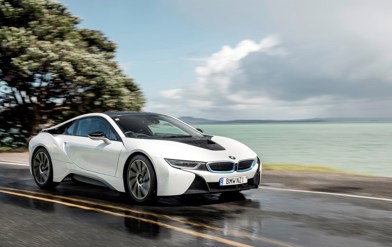Honda’s medium-sized CR-V SUV, now in its fifth generation, has a well-earned reputation as a safe vehicle.
That reputation was tested when a friend’s CR-V was badly damaged in a crash on Auckland’s Northwestern Motorway.
Although the vehicle was unrecognisable, the occupants survived, shocked but safe.
The family members were so impressed, they went out and bought a replacement CR-V.

They would be even more impressed with the newest version of the CR-V, equipped with the latest driver assist and safety technology.
We tested the mid-range AWD Sensing model, powered by a new 1.5-litre double overhead cam VTEC turbocharged engine, that puts out 140kW of power and 240Nm of torque.
Some traditionalists will shy away from such a small engine propelling a medium-sized SUV but, as regular Driven readers know, internal combustion engines have progressed in leaps and bounds in recent years, and this one is no exception.
As those output figures show, it is an efficient engine producing more power than the 2.4-litre unit used in previous CR-Vs. It is also more economical than the previous model. We averaged fuel economy figures in the high eights (8.9 litres per 100km) during our week with the vehicle.
The first thing you notice when driving the CR-V is how noisy the engine is, but quickly that thought is overtaken with the CR-V’s brisk pace. It is no slouch, reaching 100km/h in around 9.3s which isn’t bad for such a large SUV.

Not that reaching the legal speed limit in a hurry is necessarily a hallmark of medium-sized SUVs needed to accommodate all family members in relative comfort.
The CR-V is a five-seater, although Honda can also provide a seven-seater variant and by folding down the rear seat backs, it has plenty of practical space to accommodate a family’s belongings.
With the seats in place, the CR-V can accommodate 497 litres of luggage. With the rear seats folded it has space for 1694 litres of luggage.

What’s more, the large electrically operated tailgate opens to the floor of the luggage compartment, making it easy to slide boxes and other items into the vehicle.
Underneath the floor of the rear compartment is a full-sized spare tyre, something not every new car has these days.
Also dealing with practical matters, the CR-V has a braked towing capacity of 1500kg. A particularly useful bonus on all models is Trailer Stability Assist, which corrects any dangerous trailer swing before it gets out control.

There are five variants of the CR-V, starting with the 2WD S model that sells for $33,990 plus on road costs. That compares with the top-of-the-range AWD Sport Sensing model that sells for $48,990 plus ORC, and includes luxuries such as leather seats and a sunroof.
Our silver metallic test vehicle was the mid-speced AWD Sensing model selling for $42,990. All of them come with a five-year unlimited kilometre warranty and 24/7 roadside assistance.
On the road the CR-V AWD is smooth and handles inner-city speed bumps with ease. While there is the reassurance of all-wheel drive, there is no sense behind the wheel that you’re using any more energy than is necessary. It is a fine system that operates discretely.

The steering is balanced but not as sharp as some SUVs we’ve tested.However the ride is comfortable and there were no complaints from driver or passengers during two long journeys in the CR-V.
Although we did not take it off-road, this CR-V has 208mm of ground clearance, 27mm more than its predecessor. The height helps getting in and out of the vehicle, especially for adults.
There is an excellent digital display on the dashboard immediately in front of the driver, and the gear lever is within easy reach of the driver, mounted in the centre of the dashboard.
Overall it is a pleasant cabin, with plenty of storage bins, cupholders and shallow bins to store your proximity key.

The seats are comfortable, although the driver’s seat is manually adjusted, which could become an issue if more than one driver regularly uses the vehicle.
Just about everything else you need is provided, from automatic light and wiper settings to climate-controlled air conditioning.
So, as we have come to expect from Honda, the CR-V is well equipped, and well put together.

The big advances in this year’s CR-V compared with the 2018 models is the engine and the Sensing package, made up of eight new features. The major advance is adaptive cruise control, which is easy to set and operates as efficiently as any we have used.
The controls are on the steering wheel and it is simple and straightforward to set the desired speed, and to adjust it.
That system is backed up with a low speed follow system, and a lane-keep assist function that operates well although not as discretely as some others.
The Sensing package also includes a collision mitigation braking system and forward collision warning function, which we fortunately had no need to call on during our test drive.

The package also includes a road departure mitigation function that relatively gently keeps the vehicle in the correct lane without yanking the steering wheel away from the driver.
We did have the opportunity to use the eighth welcome feature of the Sensing package, the automatic high beam support system. This automatically dims the front lights when oncoming vehicles are approaching.
Any anxiety about blasting oncoming traffic with full-beam eases because it is such an assured system that operates well.
All of these features help make what was a safe, competent and assured medium-sized SUV to drive, an even more relaxed and reassuringly safe vehicle.














